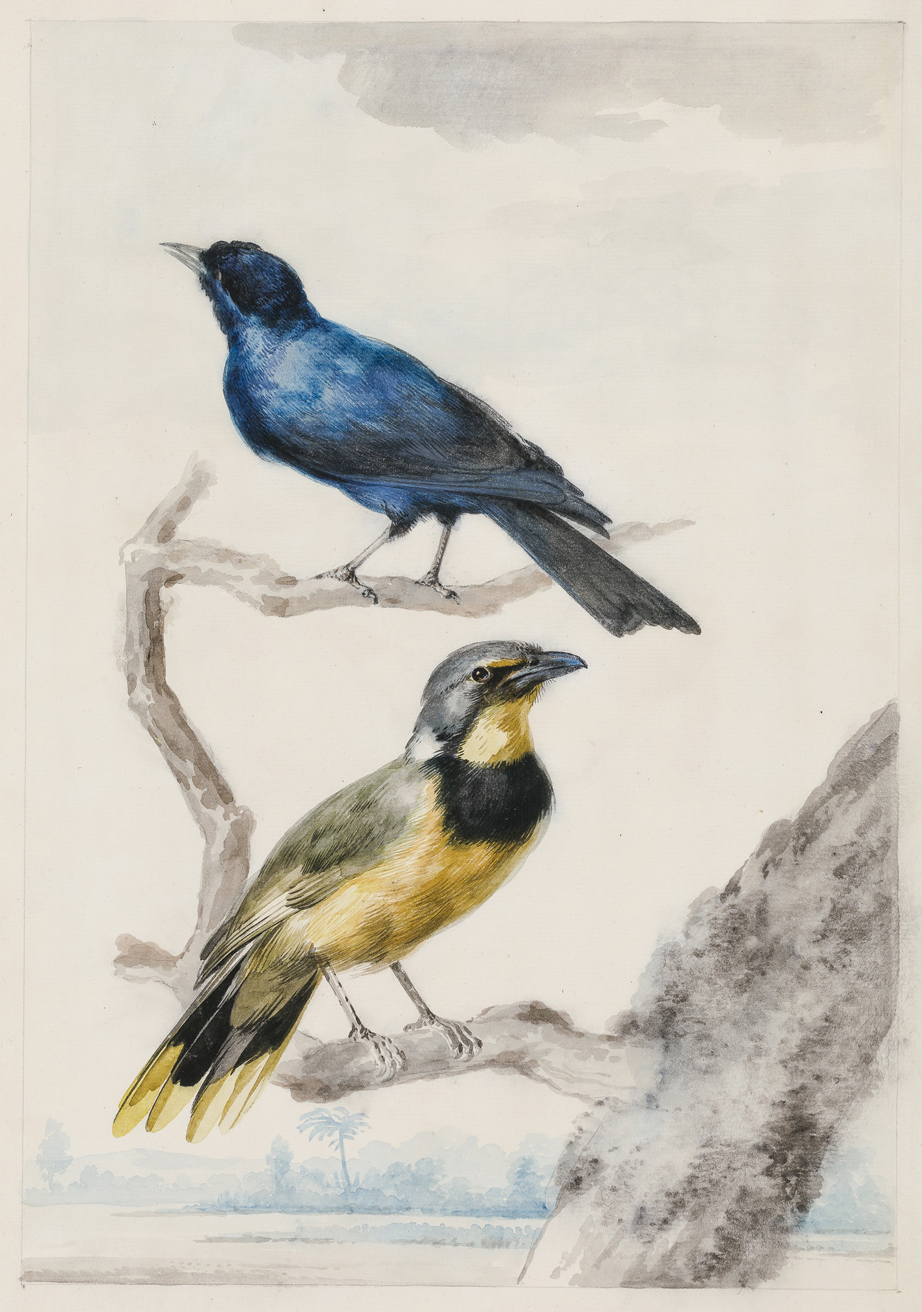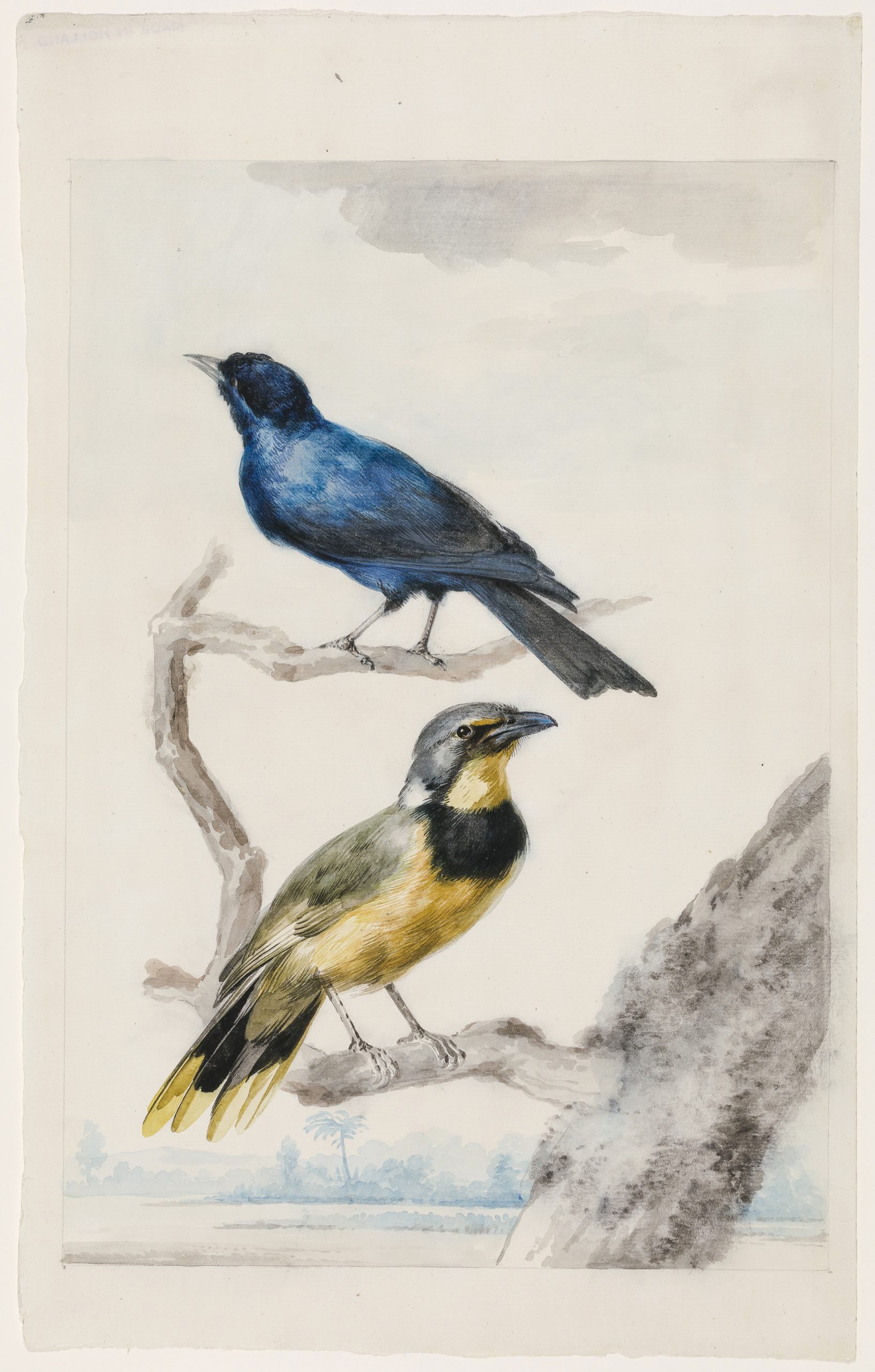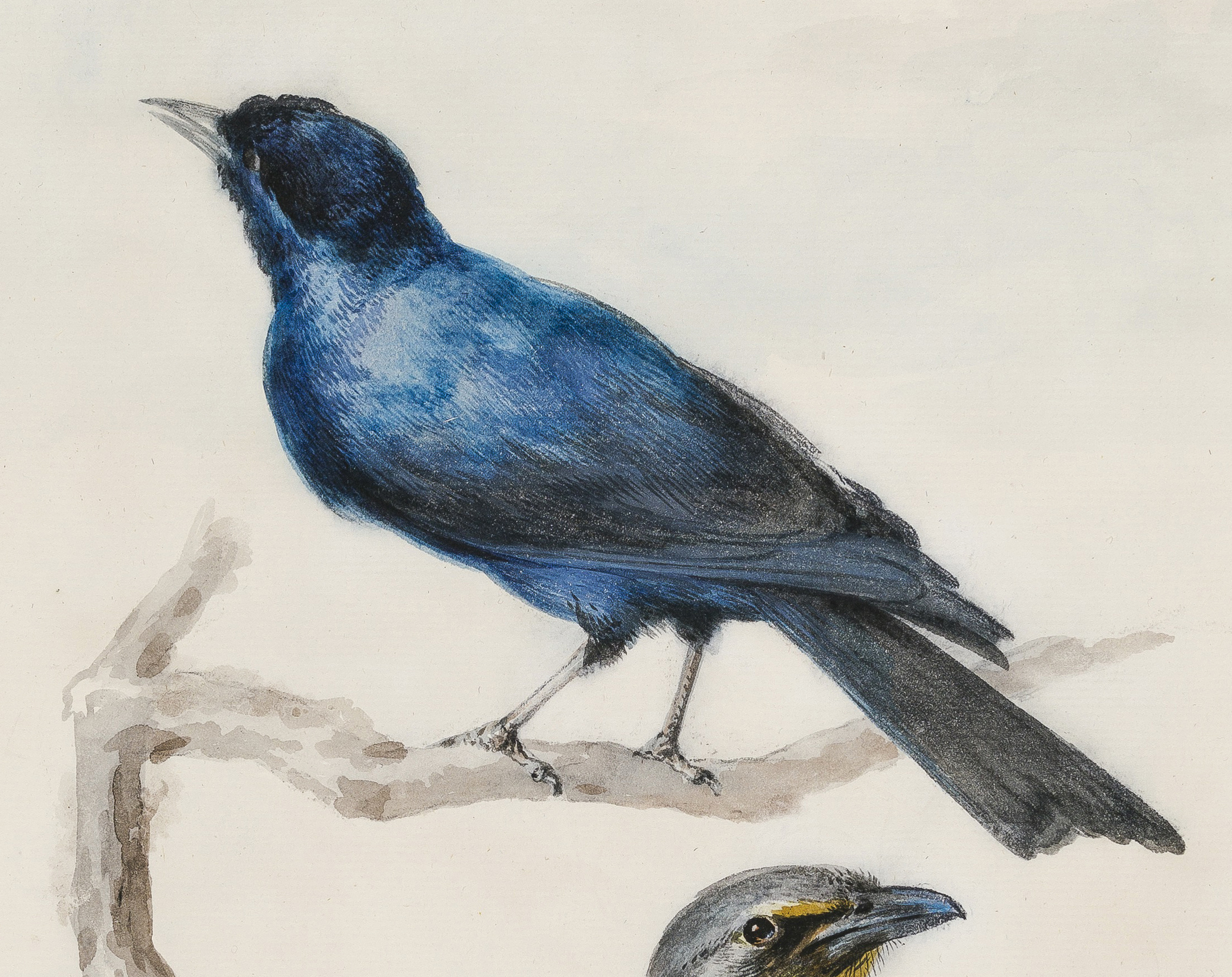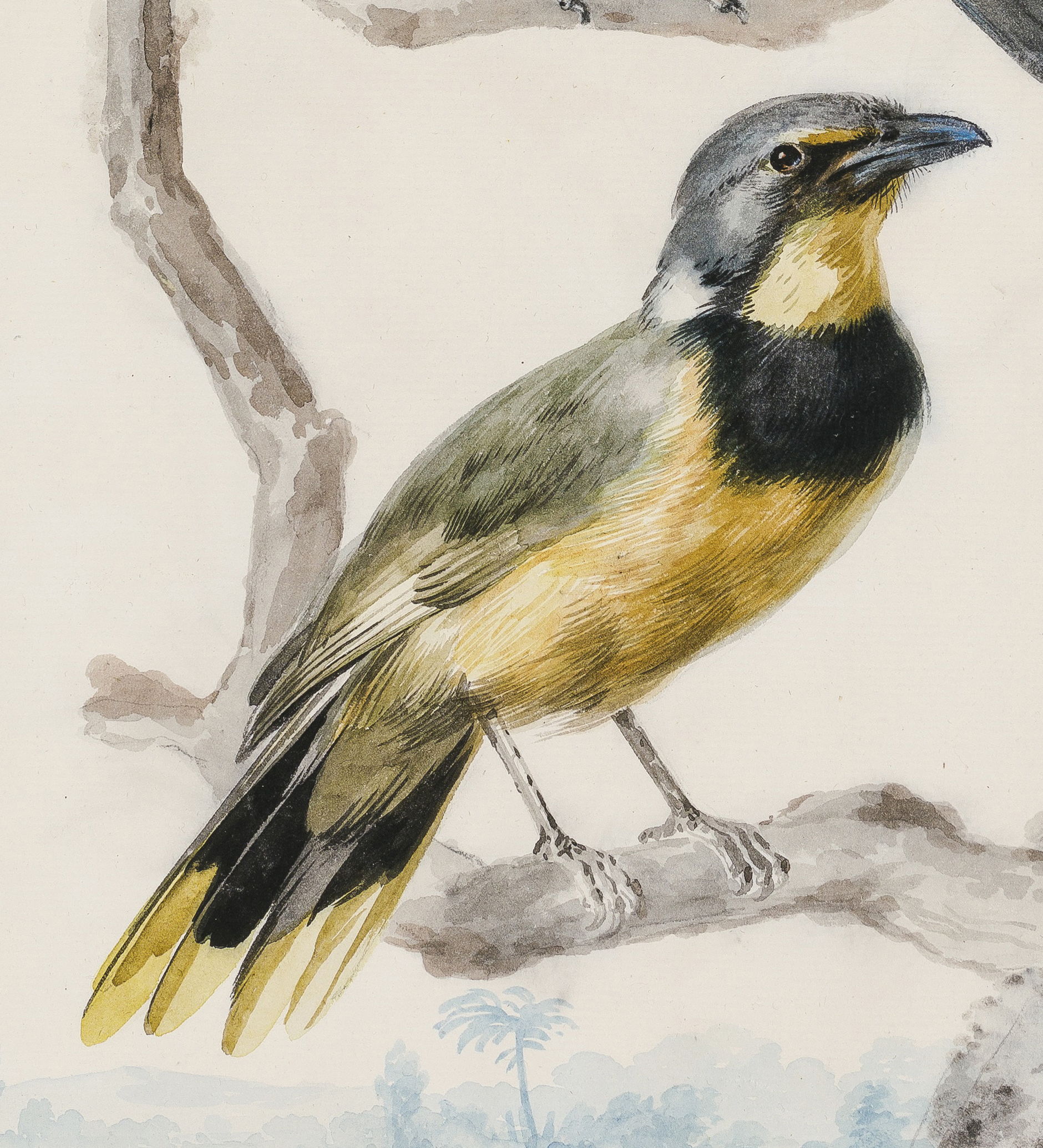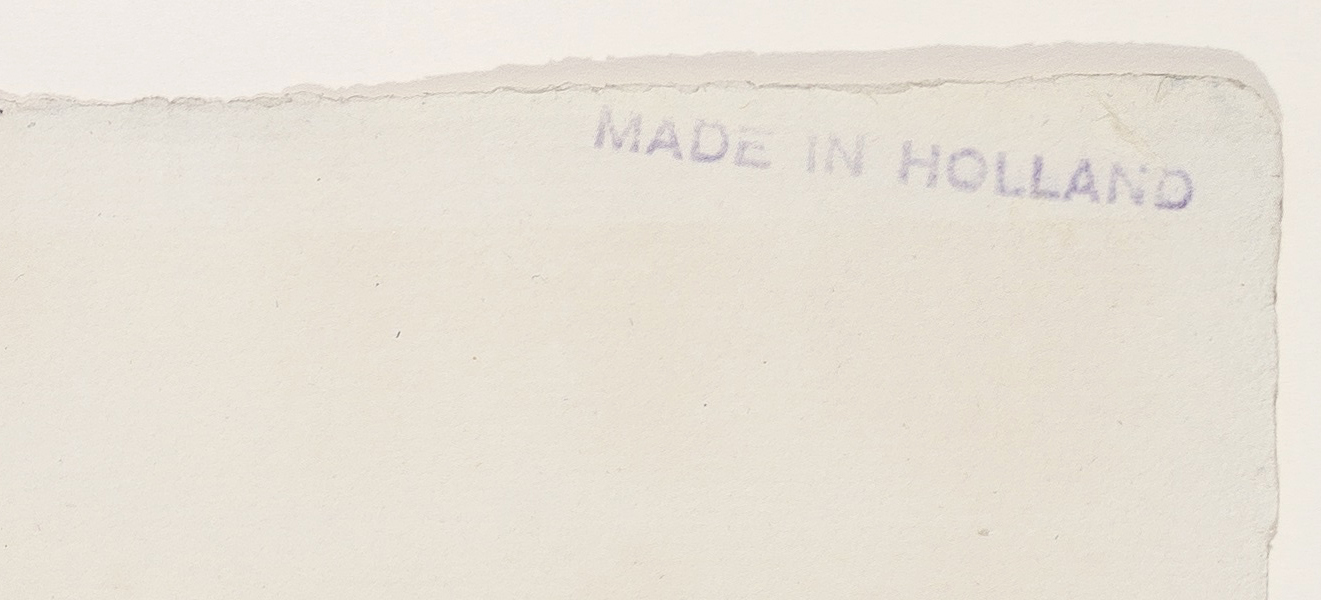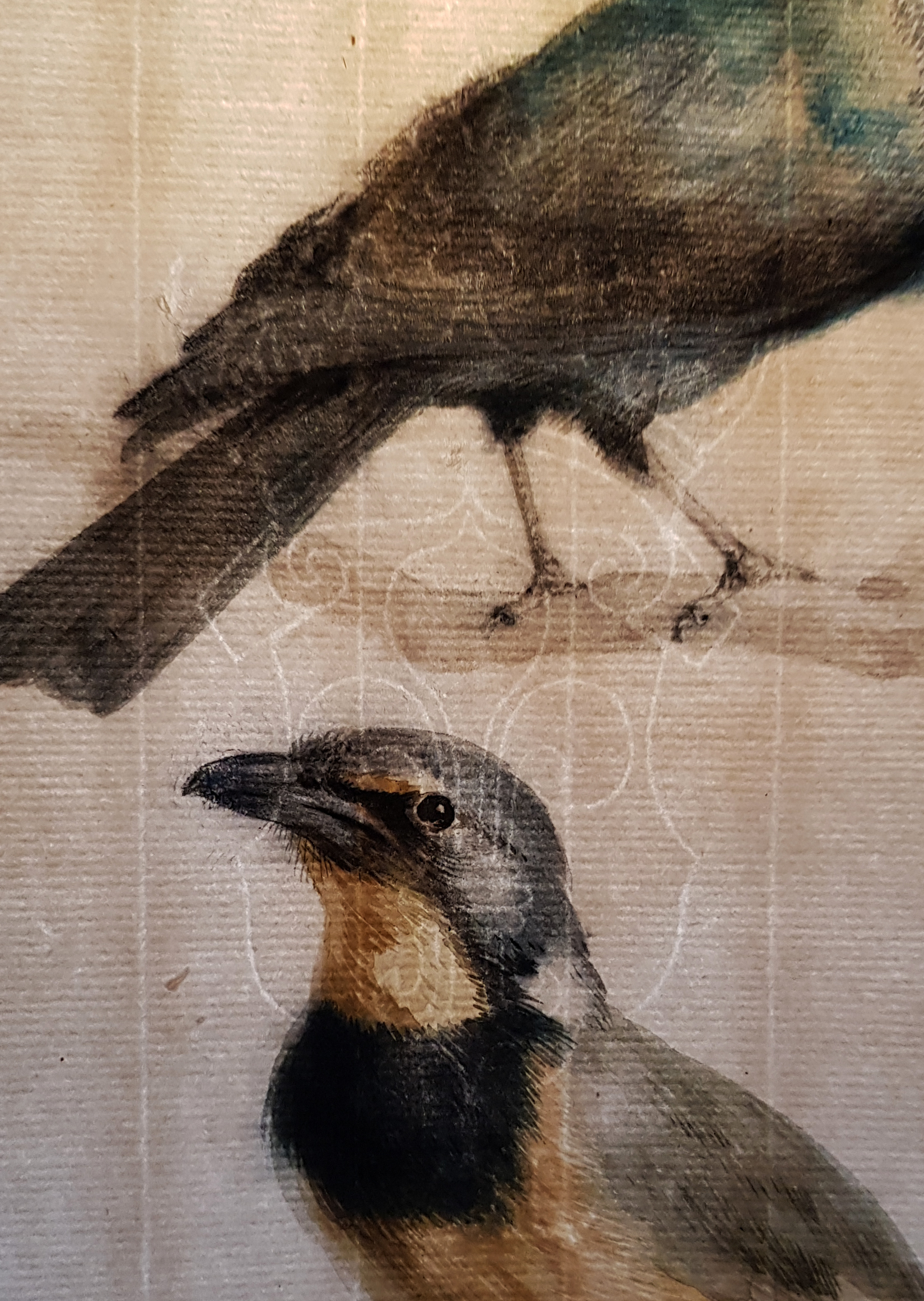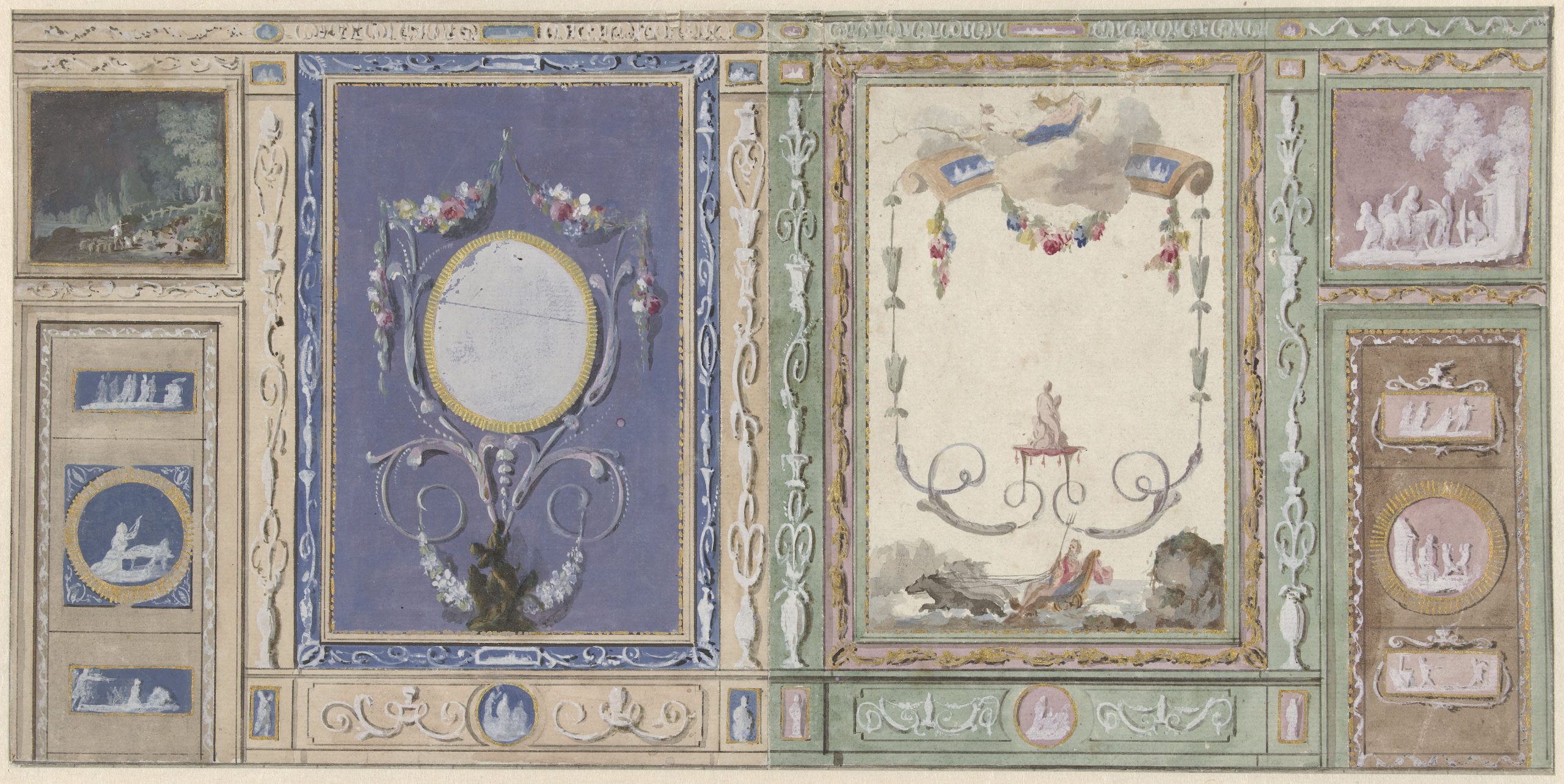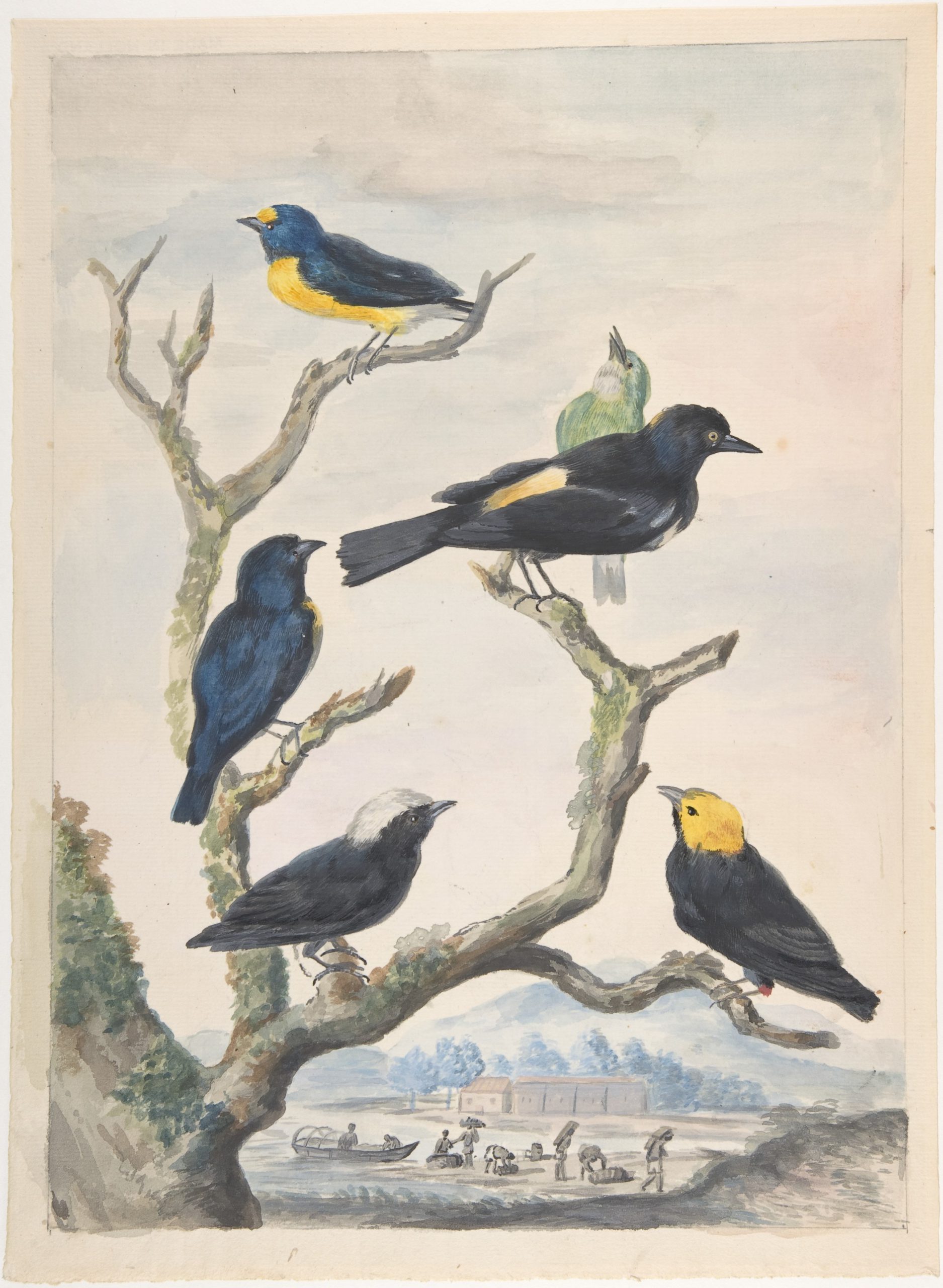ABRAHAM MEERTENS (Middelburg 1747 – 1823 Middelburg)
Abraham Meertens (Middelburg 1747 – 1823 Middelburg)
A Surinam Purple-Breasted Cotinga and a South-African Bokmakierie on a Branch
Pencil and watercolour, watermark Strasbourg lily, sheet size 437 x 274 mm (17.2 x 10.8 inch), image size 361 x 250 mm (14.2 x 9.8 inch)
Provenance
~ With dealer Donald M. Bonnist (1907–1986), Mamaroneck, USA, circa 1970, with associated stamp “MADE IN HOLLAND” (verso, upper right corner)1
~ Purchased from the latter by art dealer Saam Nijstad (1922–2011) in 1973
~ Private collection, The Netherlands
***
Abraham Meertens was born in February 1747 in Middelburg.2 He may have been a pupil of the Dordrecht artist Aert Schouman (1710–1792), and certainly studied his works, as is known from signed copies by him after Schouman. By 1777 he was established as an independent master in Middelburg, where he co-founded the town’s ‘Tekenacademie’, or drawing academy, of which he also became a director. Meertens supplied ‘behangsels’, large-scale decorative wall painting, to the elite of Middelburg. In 1809 he was asked to supply a sixth decorative painting with birds to an existing scheme of five such works by Schouman.3 In addition to being an accomplished draughtsman, Meertens also produced designs for interior schemes. A large group of such designs is preserved in the Rijksprentenkabinet of the Rijksmuseum – an example is a design for a wall elevation with two variants of a Neoclassical wall design (fig.).4
This delicate watercolour by Abraham Meertens was once in the collection of renowned Dutch collectors Saam and Lily Nijstad, whose exquisite taste was best exemplified by their private collection, called the Unicorno Collection. This spectacular group of works on paper numbered five hundred pieces and only contained drawings considered the finest in quality and condition. The works of Aert Schouman figured strongly in the Unicorno Collection, as did that of his follower, Abraham Meertens. The latter was quick to learn Schouman’s colour palette and compositional arrangement, as well as his technique of capturing natural history subjects in watercolor and washes.
The present work is part of a group of around one hundred bird and animal drawings formerly attributed to the Dordrecht artist Aert Schouman, owned by the American art dealer Donald M. Bonnist in the early 1970s. The Schouman expert L.J. Bol, director of the Dordrechts Museum, was invited to the United States to examine the group in 1972. Unable to make the journey, he asked the dealer Saam Nijstad to go in his place. Nijstad concluded that the drawings were not by Schouman, but by Meertens; in the following year, Nijstad bought the whole group. At the time of their importation into the United States, it had been necessary to apply the stamp ‘MADE IN HOLLAND’ to the verso of each drawing, in order to avoid American customs duty on the reimportation of domestically produced objects; ever since, these works have amusingly been known as the ‘Made in Holland’ drawings.
It is thought that Meertens made drawings after examples of taxidermy, but also from life, as was also done by Schouman. Menageries were fashionable during the period, such as the richly maintained collections of the Stadtholder William V in The Hague and at Het Loo, near Apeldoorn. The present sheet is particularly fresh and is one of Meertens’s most accomplished sheets – indeed, if the Made in Holland stamp had not been present, this work might have been mistaken for a drawing by Schouman. Our drawing can for instance be compared to Meertens’s sheet Six South American Birds in the Metropolitan Museum in New York, which comes from the same group (fig.).5 The group did not only include drawings of birds, but also for instance of a fallow deer calf.6
This delicately executed drawing represents a Purple-breasted Cotinga (Cotinga cotinga) from Surinam and a Bokmakierie (Telophorus zeylonus) from the Cape of Good Hope in South Africa.7 The Continga is seen on the back and therefore its purple breast cannot be observed. As they are from two different continents, the birds would never have encountered in the wild. The spontaneously painted tropical landscape with palm trees along the lower edge further illustrates the exotic nature of the birds – as is well known, the eighteenth century witnessed a great growing interest in the observation of the natural world, evidenced for instance by the emergence of encyclopedia and collections of drawings such as the present one, valued possessions of lovers of art, but also of amateur naturalists.
The authorship by Meertens was kindly confirmed by Drs Charles Dumas and Drs Robert-Jan te Rijdt upon examination of the original on 8 July 2022.
SOLD
1. See Charles Dumas and Robert-Jan te Rijdt, Kleur en rafinnement. Tekeningen uit de Unicorno collectie, exh. cat. Amsterdam (Rembrandthuis) and Dordrechts Museum (Dordrecht) 1994-1995, p. 26.
2. For the artist, see R. Harmanni, ‘Zeeuwse vogelbehangsels in de tweede helft van de achttiende eeuw en het werk van Abraham Meertens (1747-1823)’, iZeeland 3 (1994), pp. 53-62 and C.W. Fock, ‘Abraham Meertens, een eigenzinnig ontwerper’, in : K. Heyning en G. van Herwijnen (red.), ‘Om een prijs en plaats’. De Middelburgse Teeken Akademie 1778-2003, Middelburg 2004, p.34.
3. Dumas and Te Rijdt, op. cit., p. 118.
4. Pen and ink, watercolour, goldleaf, 204 x 412 mm, inv. no. RP-T-1913-129.
5. Watercolour, 372 x 272 mm, inv. no. 2005.6; Dumas and Te Rijdt, op. cit., Addenda no. 20.
6. Watercolour, 430 x 272 mm; Dumas and Te Rijdt, op. cit., p. 118, fig. 54.1.
7. We are extremely grateful to Klaas Post, Kees Moeliker and Ruud Vlek for the identification of the birds.
